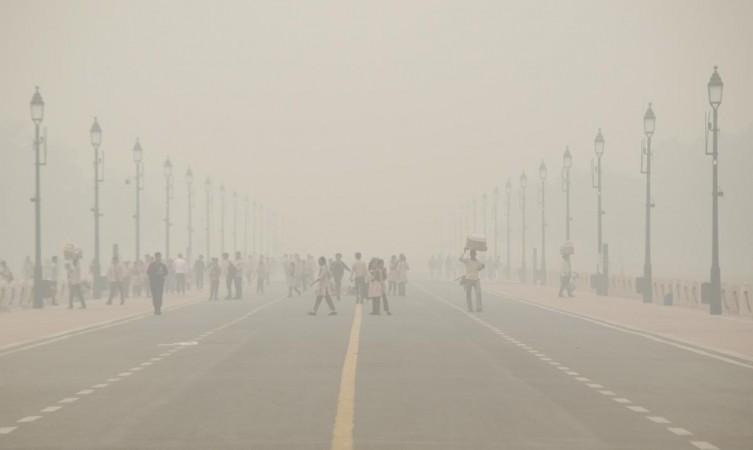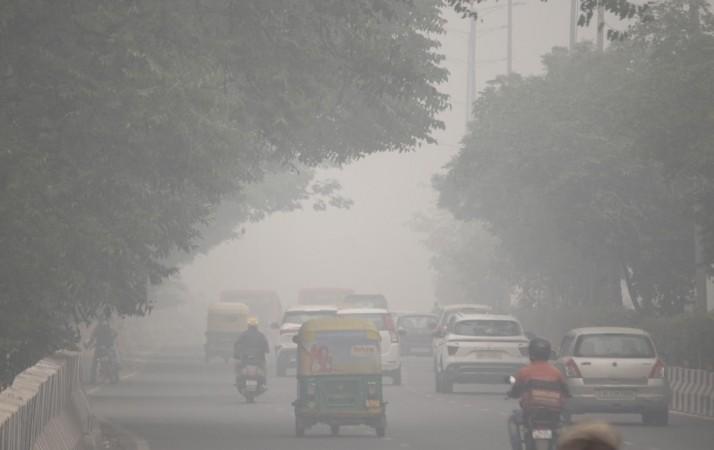
As the festive season of Diwali engulfs the city of Delhi air pollution continues to cast a shadow over the celebrations. The air quality in the city and its surrounding regions has been categorized as 'poor', with a thin layer of smog blanketing the area. The Central Pollution Control Board (CPCB) recorded an Air Quality Index (AQI) of 273 at 7.45 a.m. on Wednesday, placing it firmly in the 'poor' category.
The AQI is a measure of the air's health impact on a scale of 0 to 500, with 0-50 considered good, 51-100 satisfactory, 101-200 moderate, 201-300 poor, 301-400 very poor, and 401-500 severe. Several stations across Delhi recorded AQI in the 'poor' category of 201-300, with some even reaching the 'very poor' category of 301-400.
Specifically, the AQI level was 351 in Anand Vihar, 319 in Bawana, 313 in Jahangirpuri, 351 in Mundka, 308 in Narela, 326 in Vivek Vihar, and 327 in Wazirpur. Other areas of Delhi saw AQI levels between 200 and above 300, indicating a widespread issue.
In the National Capital Region (NCR) cities, the air pollution levels were slightly below that of Delhi, with Faridabad recording an AQI of 172, Gurugram 197, and Ghaziabad and Greater Noida both at 213. However, the score remained 199 in Uttar Pradesh and Noida, still falling within the 'poor' category.

This is not a new phenomenon for Delhi. The city experienced similar air quality on Tuesday, with an AQI of 268, which was an improvement from 304 the previous day. The air pollution levels in Delhi-NCR have been fluctuating between 'very poor' to 'poor' levels in the past few days. Major contributors to this issue are stubble burning and firecrackers, with the absence of favourable wind conditions also contributing to the high pollution levels.
In response to this ongoing issue, the Delhi Pollution Control Committee (DPCC) has imposed a total ban on the manufacturing, storage, sale, and use of firecrackers until January 1, 2025. The state government has deployed 377 teams to enforce the cracker ban in the city, with 300 of these teams coming from the police and the rest from the revenue department.
On October 22, the Commission for Air Quality Management (CAQM) ordered the implementation of Stage 2 emergency measures under the Graded Response Action Plan (GRAP) to curb the city's air pollution. These measures include tackling dust pollution and limiting emissions from diesel generators, a move aimed at curbing further deterioration. Authorities have deployed mechanical and vacuum road sweepers, conducted water sprinkling operations on key roads, and intensified inspections at construction sites to enforce strict dust control measures.
Historically, Delhi has been struggling with the issue of air pollution for years. In November 2019, a public health emergency was declared in Delhi after air quality plunged to 'severe plus' levels. The Environment Pollution (Prevention) and Control Authority (EPCA) gave directions under the Graded Response Action Plan (GRAP) to completely ban all construction activities in the national capital and adjoining regions of Faridabad, Gurgaon, Ghaziabad, Noida, and Greater Noida.
In addition to this, all coal and other fuel-based industries which had not shifted to natural gas or agro residue were ordered to remain closed in Faridabad, Gurugram, Ghaziabad, Noida, Greater Noida, Sonepat, Panipat, Bahudargarh, and Bhiwadi till November 5 morning. In Delhi, the ban was on industries which had not shifted to piped natural gas (PNG).
The situation in Delhi is a stark reminder of the urgent need for effective measures to combat air pollution. As the city continues to struggle with poor air quality, it is clear that a comprehensive and sustained approach is required to tackle this issue. The measures taken by the DPCC and the CAQM are steps in the right direction, but the city's struggle with air pollution is far from over. The city's residents and authorities must continue to work together to ensure a cleaner, healthier future for all.

















